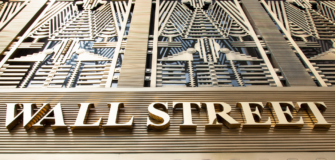Are Electronic Shelf Labels Right for Every Retail Environment?
Share
In this article, SEIRIM managing director Stephen Schroeder explains how electronic shelf labels may be key to improving the workflow of your retail business.
E-commerce has spread far and wide in the recent past after digital networking and connectivity increased with the use of laptops and smartphones. This increase has also resulted in a few noticeable changes in the working methods employed in the retail sector worldwide. The development and utilisation of electronic price tags proves that digital technologies are benefiting both retailers and their customers. These innovative price tags offer an easy approach to digital price labeling, which saves time and money by giving useful information and up-to-date data to customers.
What do you understand by an “Electronic Shelf Labeling” (ESL) system?
An electronic shelf labeling system is a modern innovation that makes retail
- Unnecessary costs that are caused in the event of a surplus, stock shortage, misplaced goods, etc.
- Delays associated with product delivery, which is one of the most common challenges for those who manage or simply work in retail,
- Customer dissatisfaction, which occurs due to a lack of transparency and optimal planning for inventory and warehouse management.
The connection between ESL solutions and retail space
Through electronic shelf labeling solutions, or ESL solutions in short, retailers are capable of adjusting their business smartly and in accordance with customer demands. Ideally, including ESL solutions in any sort of retail space can modernise a shop and enhance its efficiency by facilitating more services and customer contact. The inclusion of an interactive advisory system could pave the way for next-level customer service.
An ESL clearly shows the location, type, quantity, and other information for any stored product. This simplifies getting an order ready for customers and also shares the order status with the central system. At the end of the day, the goal of modern ESL solutions is to make room for more useful services by price labeling and advertising in the shop for successful retailers.
ESL Systems in Different Retail Environments
After getting a general idea of ESL solutions’ inclusion in the retail sector, it is now time to determine how and why electronic shelf labels are right for the most common retail environments described below.
- Department stores
Retail stores that offer specialised services and products to their customers rely heavily on positive human interaction and their in-store expert advice. In such a scenario, the role of modern technology is often overlooked as people tend to prefer the human element instead. But according to experts, there is a massive opportunity in this space for electronic price labels for streamlining stock, goods, and staff information management.
- Pharmacies
Since pharmacies turned online, the demand for quick, easy, and convenient pharmacies has increased exponentially. Meeting the demands of clients is close to impossible for stationary retail without the help of digital solutions such as ESL and digital signage. Technologies like ESL systems help accelerate and ease on-site processes. Furthermore, when pharmacies use NFC technology-integrated digital price signs, it allows customers to find any and all data about any medication on a smartphone.
- Food retail
Frequent and inconvenient price adjustments are a common sight for those who are associated with the food retail trade. It is unavoidable and also causes high costs due to assembly, disposal, and also label printing. But with ESL, that comes with digital inventory management, these extra costs and the wastage of goods can be reduced to a minimum. Handling perishable goods that retailers deal with in the food industry is a breeze with ESL systems.
- Fashion stores
The expansive and transforming fashion industry poses a challenge to retail management, even in the digital age. Global brands are required to always stay on top of the digital trends by reinventing the way they provide customer experiences to leave competition behind. Several brands have accepted modern requirements like digital price tags, e-paper displays, etc. This is a convenient, creative, and innovative way to give customers access to relevant information about any product.
- Furniture stores
The rate at which furniture retail space has digitised over the years is a good example of constant motion. Even in this world-class segment, well-established retailers are struggling to expand their local presence. But medium and small-scale furniture retailers that function through an e-commerce channel are making progress at a surprising rate. ESL is helping furniture stores to reduce the gap that exists between them and the stationary retail industry.
Conclusion
It is clear to see from a store manager’s point of view that the existence and appropriate use of an ESL system can reduce unnecessary labor costs by improving the overall workflow.











Follow us on social media